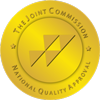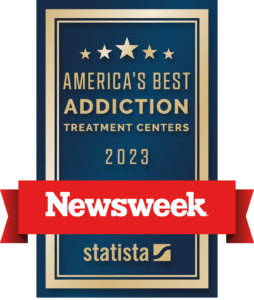Bipolar Disorder and Alcoholism: Is There a Connection?
Bipolar disorder and alcoholism, sometimes called alcohol use disorder (AUD), often occur together (co-occurring or dual-diagnosis). It is difficult to determine which condition occurs first, and there are many explanations for the relationship between these two conditions, but it remains poorly understood. Although the connection between the two isn’t clear, certain factors are likely to play a role:
- Inherited traits. Genetic differences appear to affect brain chemistry linked to bipolar disorder. The same genetic traits may also affect the way the brain responds to alcohol, which increases the risk of alcohol use disorder.
- Depression and anxiety. Some people drink to relieve depression, anxiety, and other symptoms of bipolar disorder. Drinking may appear to help, but in the long run, it only makes the symptoms worse. This may lead to more drinking, setting up a cycle that is difficult to break.
- Mania. This is an upswing from depression that usually features an elated mood and hyperactivity. It commonly causes bad judgment and lowered inhibitions. This also can lead to increased alcohol use.
Which Occurs First?
Bipolar disorder and alcoholism co-occur at higher than expected rates. More often than they would by chance and more often than alcoholism and unipolar depression (depression without the manic episodes).
AUD and bipolar disorder is a dangerous combination. Each one can worsen the symptoms and severity of the other. Having both increases the risk of mood swings depression, violence, and suicide.
Researchers propose reasons for the strong relationship between alcoholism and bipolar disorder. But the exact connection is not well known. One explanation is that certain psychiatric disorders (such as bipolar) may be risk factors for substance use. On the other hand, symptoms of bipolar disorder may appear during chronic alcohol intoxication or withdrawal. Alcohol withdrawal may trigger bipolar symptoms.
Alcoholics will often report having mood swings. It is very important to differentiate between alcohol-induced symptoms from actual bipolar illness. This can be difficult because chronic heavy alcohol use and withdrawal can mimic many psychiatric disorders. Alcohol intoxication can produce behavior similar to mania, including euphoria, increased energy, grandiosity, and sometimes paranoia.
Other studies suggest that people with bipolar disorder may use alcohol during manic periods in an attempt to self-medicate. They may do this either to prolong the pleasurable experience or to sedate the agitation of mania.
Other researchers suggest that alcohol use and withdrawal may affect the same brain chemicals (neurotransmitters) that are involved in bipolar disorder symptoms. Alcohol use or withdrawal may prompt the bipolar disorder symptoms. It is likely that this is not a simple case of cause and effect, but a more complex situation.
Order of Onset
An important factor in studying the influence of alcoholism on bipolar disorder, or vice versa, is the order of onset of the two disorders. A mood disorder that occurs before the onset of the other disorder is called a primary affective disorder. Likewise, a disorder that occurs after the onset of the other is called a secondary affective disorder.
Scientists conducted a study of three groups of individuals:
- Those with primary bipolar disorder and no history of substance abuse.
- Individuals with primary bipolar disorder complicated by a secondary substance abuse disorder.
- Those with primary substance abuse disorder and secondary bipolar disorder.
The researchers found that those in group 2 had a significantly earlier onset of bipolar disorder than those in the other groups. They also reported that those in groups 2 and 3 had significantly higher rates of suicide attempts than group 1. The individuals with primary alcoholism had fewer episodes of mood disorder in the follow-up, which may mean that they had a less severe form of bipolar disorder.
The onset of bipolar disorder tended to precede that of alcohol use disorder. The researchers concluded that alcoholism is often a complication of bipolar disorder rather than a risk factor for it. There is also evidence that people with primary alcohol use disorder may be better able to control their mood swings if they are able to stop drinking.
Family Risk for Bipolar Disorder and Alcoholism
The role of genetic factors in psychiatric disorders has been studied a lot recently. There is some evidence available that supports the possibility of the transmission of both bipolar and alcoholism in families. Scientists conducted a family study of mood disorders and alcohol dependence by evaluating 226 people with alcoholism with and without a mood disorder and the family members of those people. They discovered that there is a greater family relationship between alcoholism and bipolar disorder than between alcohol use disorder and unipolar depression.
Children who have one parent who has it have a 10-25% chance of developing the disorder. Children with two parents who have the disorder have a 10-50% chance. If a non-identical twin sibling has it, the other twin has a 10-25% chance.
When identical twins were studied, the chance of developing the illness was 40-70% when one twin had it. If bipolar were purely hereditary, both twins would have it because they have the same genes. Bipolar can also show itself in different forms in the same family.
Findings such as these have implications for prevention and treatment. A positive family history of alcohol dependence or bipolar disorder is an important risk factor for offspring.
Manic Depression/Bipolar Disorder
Bipolar disorder is often called manic depression. It is a mood disorder that is characterized by extreme changes in mood from euphoria to severe depression. It is also interspersed with periods of normal moods.
The Diagnostic and Statistical Manual of Mental Disorders currently lists five types of bipolar disorder with bipolar I and II being the most common.
- Bipolar I—manic episodes lasting 7 days or more or severe enough to require hospitalization. A major depressive episode that lasts 2 weeks or more.
- Bipolar II—the mania is less severe than bipolar I, and depressive episodes occur before or after manic periods.
- Cyclothymic disorder—this includes symptoms of hypomania and depression that last 1 year or more in children and 2 years or more in adults.
- Unspecified and specified related disorders—the symptoms may stem from drug or alcohol use or other medical conditions.
Depressive symptoms of bipolar disorder are the same as the symptoms of clinical depression. Bipolar I and II may cause additional symptoms, such as anxiety or psychosis. People lose touch with reality during psychotic episodes and may experience hallucinations or delusions.
Bipolar disorder represents a significant public health problem and often goes undiagnosed and untreated for long periods. In a survey of 500 individuals with bipolar disorder, 48% consulted 5 different health care professionals before receiving a diagnosis of bipolar disorder. Thirty-five percent spent an average of 10 years between the onset of their illness and diagnosis and treatment.
The Alcohol Effect on Bipolar Disorder
Alcohol dependence is characterized by a craving for alcohol, physical dependence on alcohol, an inability to control drinking, and an increasing tolerance for alcohol. Alcohol abuse usually begins in early adulthood and is an early step towards alcohol dependence.
Several studies have shown that substance abuse, including alcoholism, may make the clinical course of bipolar disorder worse. It appears that alcohol use disorder adversely aggravates the condition causing more frequent hospitalizations. Also, those with more treatment-resistant symptoms (rapid cycling through the episodes for one) are more likely to have comorbid (co-occurring) alcohol dependence, than those with less severe bipolar symptoms.
If left untreated, alcohol dependence and withdrawal are likely to worsen mood symptoms forming a vicious cycle of alcohol use and mood instability. There is some evidence, however, that with effective treatment of their mood symptoms, people can achieve remission of their alcoholism.
Suicide Warning
There is a high suicide risk for those with bipolar disorder, so it’s important to know the warning signs. Signs include:
- Withdrawing from loved ones
- Talking or writing about death or suicide
- Putting personal affairs in order
- Feelings of hopelessness and sadness
- Changes in appetite and weight
- Inability to concentrate
- Previous attempts.
Dual Diagnosis for Bipolar Disorder and Alcoholism
Someone who has both conditions co-occurring has what professionals call a dual diagnosis. Treatment will require the expertise of mental health professionals who specialize in the treatment of both disorders. It has been shown that treating bipolar disorder will likely have a positive effect on the person’s AUD.
There are no medical tests to diagnose bipolar disorder. A medical professional can diagnose the disorder through a face-to-face interview. The interview will include detailed questions about your symptoms, your mental health history and your family’s.
Treatments For Bipolar Disorder and Alcoholism
Individuals can manage bipolar disorder with a combination of medication and psychotherapy. This helps reduce the number of episodes and severity. It can also help prevent future episodes if you are willing to work on your personal issues and develop healthy habits.
Treatment can involve several medications like mood stabilizers. Medical professionals prescribe these to help stabilize manic episodes, prevent future episodes and reduce suicide risk. They include Depakote Topamax.
Atypical Antipsychotics
These were originally developed to treat psychosis (a symptom of schizophrenia), and also work to control mood swings. Examples include Abilify and Seroquel.
Calcium-channel blockers. Also used to treat mood swings and have fewer side effects but are also less effective. Calan, Isoptin, and Nimotop are a few.
Combination Therapy
When one medication isn’t working, a doctor might prescribe two mood stabilizers or a mood stabilizer along with a medication to treat other symptoms, such as anxiety. Xanax is typically taken for 2 weeks before the mood-stabilizing medication starts to work.
Cognitive-Behavioral Therapy (CBT)
CBT helps people to develop strategies to deal with their symptoms.
Interpersonal and social rhythm therapy. This is a combination of CBT and interpersonal therapy that helps individuals to build and maintain routines and healthier relationships.
Psychoeducation. Individuals learn about their disorder and treatment and give them the ability to manage it and anticipate mood swings.
What Should Occur Next?
By starting to learn about bipolar disorder and the connection to alcohol dependence, you have made a very important first step. If you would like to learn more, call us and speak to a qualified specialist at Sana Lake Recovery Center. You can also contact us here.
If you think you or someone you know has bipolar disorder, it is important to receive an evaluation by a trained mental health professional. At Sana Lake Recovery Center, we pride ourselves on our personalized approach to substance abuse and co-occurring mental health issues.
This won’t get better on its own. Take the next step and call. Then breathe a sigh of relief.



